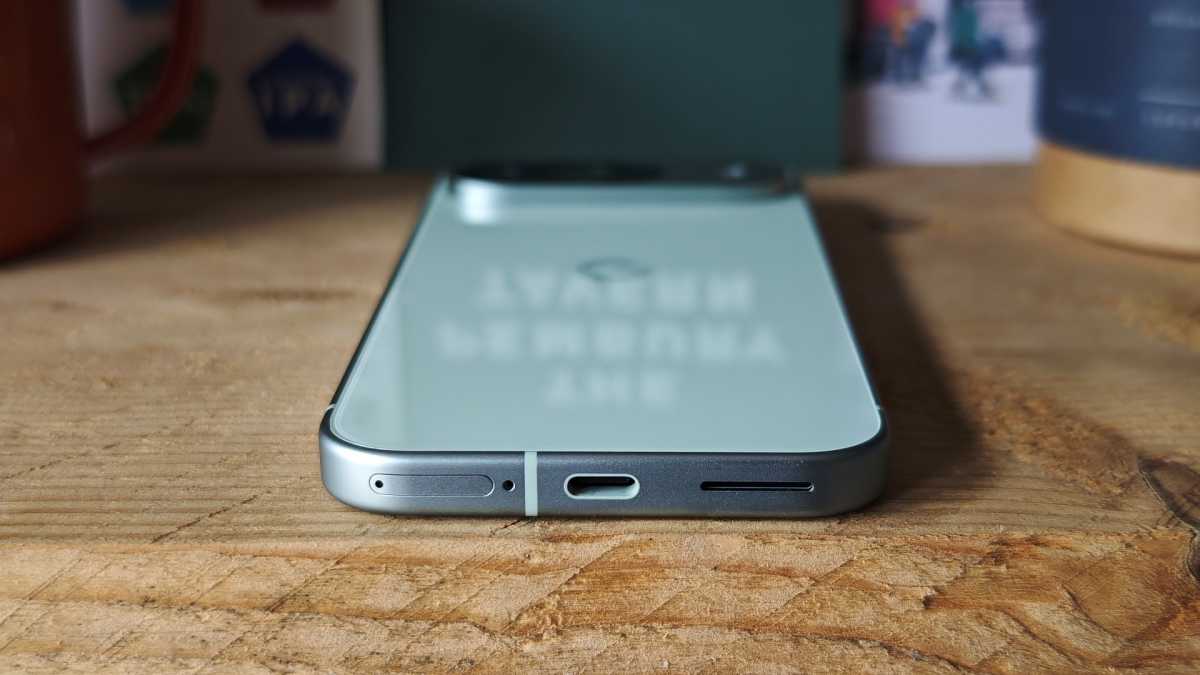Google’s new flagship range of phones goes on sale tomorrow and I’ve been using the Pixel 9 for almost a week.
I haven’t used it enough to bring you a full review yet, largely due to a wave of new software features including Gemini, but I have a lot of thoughts so far on the design, hardware and more.
We have a full Google Pixel 9 Pro XL review which you should read.
Design
Although I’ve been a fan of Pixel phone designs since the start, I’m a bit torn this year.
Google has always ensured that Pixel handsets have had a distinct character, from the two-tone backs of early generations to the divisive camera bar introduced with the Pixel 6.
I’ve always liked Google’s aesthetic of pebble-like shapes and mostly nice colours but the Pixel 9 series has had something of an overhaul in a new direction.
The build quality certainly feels better than ever but Google has, to put it simply, gone iPhone with the design this year.
The flat sides and rounded corners are straight out of the Apple design book and apart from subtle details like button placement and the glossy rear cover, it’s only the camera bump that would be the big giveaway if you blindfolded me and handed me the Pixel 9 and iPhone 15.
It’s not that Google has done anything overtly wrong here – I like the iPhone 15 – but it’s a shame to lose most of the Pixel personality and conform to trends instead. I prefer the old camera bar design that blended into the sides, and the glossy back is one of the most slippery I’ve ever used (the Pros have a matt back but glossy metal sides).

Chris Martin / Foundry
A case is pretty much a requirement and, as ever, it’s a shame to hide most of the phone. Especially as I really like the Wintergreen colourway I’ve been testing – Obsidian, Porcelain and Peony are also available.
Hardware
You could argue that Google has always been a little bit behind on hardware with the Pixel phones, although not in any major way.
However, the Pixel 9 has a number of upgrades that bring it closer to the standards of a premium phone.
Of course, you get the latest Tensor G4 chipset, which so far in my testing has been running the phone perfectly smoothly. There’s also a big 50% bump to the memory so you get 12GB as standard now (the Pro models get 16GB).
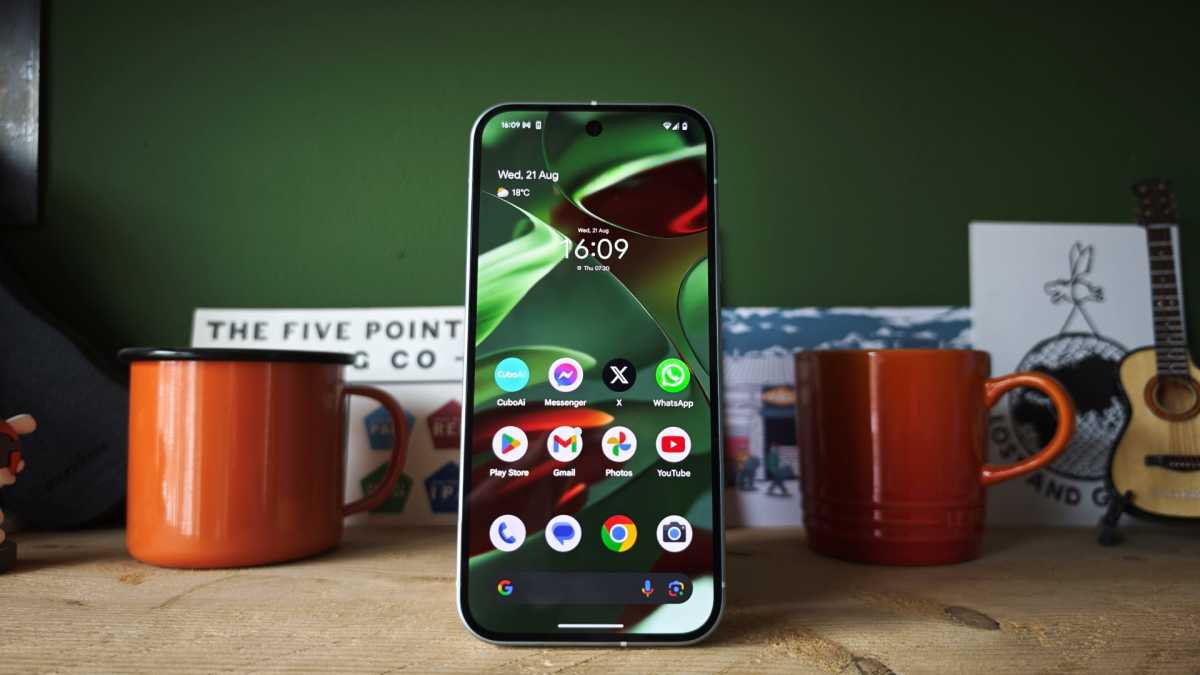
Chris Martin / Foundry
A more noticeable upgrade is the latest Actua display, which is a lot brighter than before so I’ve found it easier to use outside. A thinner bezel makes the Pixel 9 look more premium, too.
It still lacks LPTO tech in order to drop the refresh rate down to 1Hz, but I’ve found battery life decent from the larger 4700mAh cell, so I won’t grumble too much. It’s tech that’s understandably reserved for the Pro models.
Happily, Google has finally swapped from an optical fingerprint scanner to an ultrasonic one and performance is much better on this front. Facial recognition works well, too.

Chris Martin / Foundry
Things are similar on the camera front, with the main upgrade being a jump from 12- to 48Mp for the ultrawide camera. I’m still testing the cameras but the results so far have been as impressive as we’ve come to expect from Pixel phones.
You still need to buy a Pro to get a telephoto lens, of course – as well as a higher resolution selfie camera.
Here’s a selection of samples from my testing so far.
Software
It may come as a surprise that the Pixel 9 series ships with Android 14. This is because Google has launched the series earlier in the year than usual and Android 15 isn’t quite ready yet. However, you’ll be the first to get 15 when it does arrive, and Google still offers seven years of OS and security updates, so I don’t consider it to be a big problem.
There’s still a lot of new stuff here regardless, and that’s the main reason why I’m not ready to bring you a full review. Google Gemini is the main one, and such is the AI drive in tech right now that there’s a lot to break down and try out.
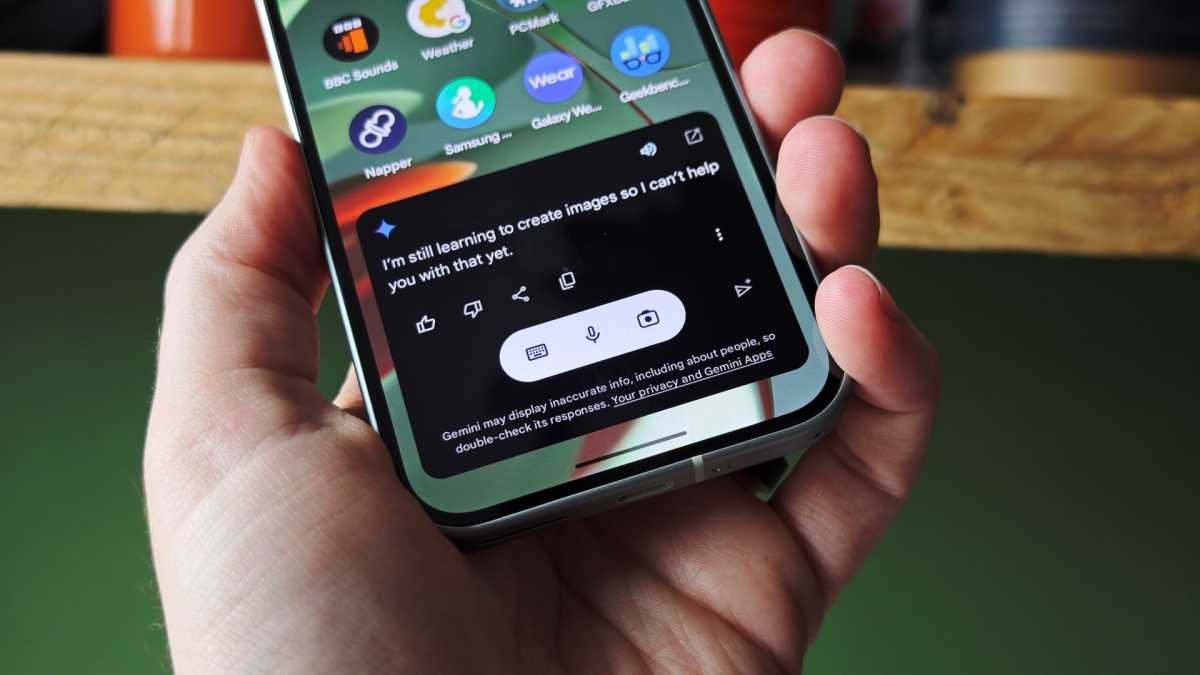
Chris Martin / Foundry
I don’t think Google has done the best job of communicating what Gemini is and its details, like whether it’s a direct replacement of Google Assistant (it is on the Pixel 9 phones).
As with a lot of AI tools, it’s also hard to know exactly what it can and can’t do.
The first time I opened Gemini, it told me it could create images – but when I asked for one it said it couldn’t do that. The Pixel Studio app, which is dedicated to this task, also isn’t on the phone despite the setup process mentioning it by name.
Gemini should also be able to help with specific requests, like changing phone settings. While it can turn Bluetooth on and off, for example, it can’t change the length of my screen timeout.
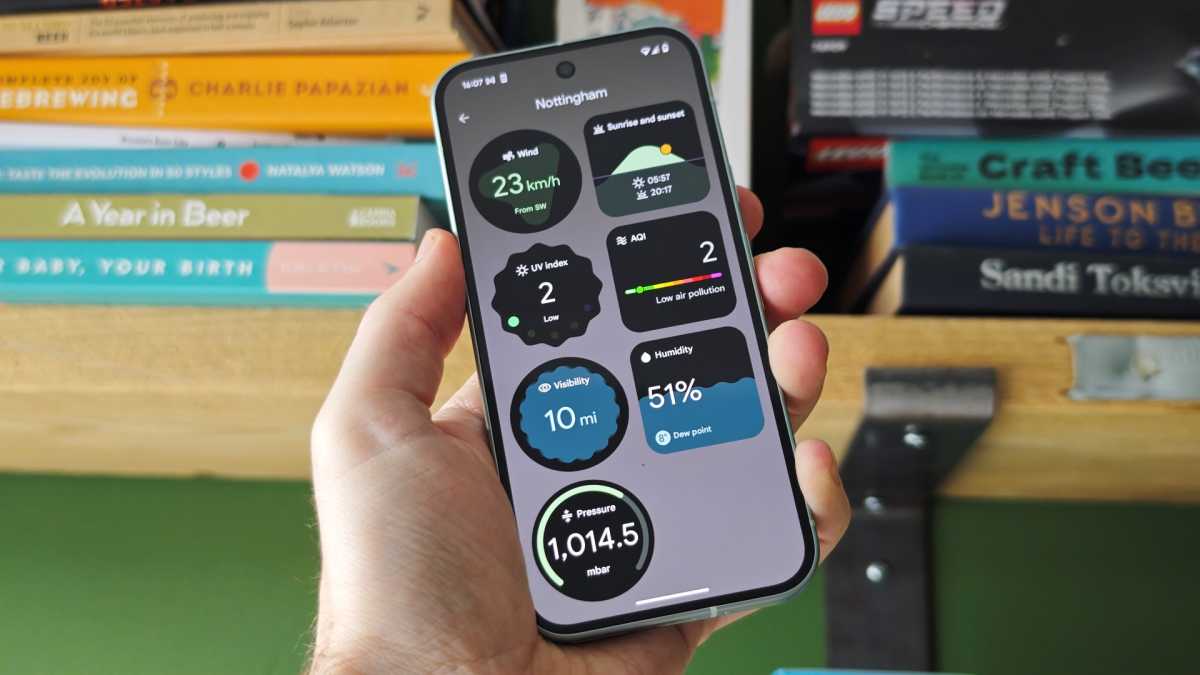
Chris Martin / Foundry
The other bit of confusion, which is very unlike Google, is over the new weather app. I really like it so far but there are, in fact, two: the one built into the homescreen underneath the date links to the old version, and the phone even prompted me to create an app icon for it.
We don’t like to see devices shipping with the promise of features coming in the future but it might have been better for Google to iron these issues out and release them with Android 15 later in the year.
The three Android 15 features I can’t wait to try first
What I do have is the Pixel Screenshots app, which I think I’m going to find really useful. I take a lot of screenshots – restaurant menus, maps and all sorts – and the app not only filters them into their own app but allows you to search for information in the same way you can search for ‘burgers’ on Google Photos. It’s likely to be a real time-saving boon for information you know is in there somewhere but can’t find manually.
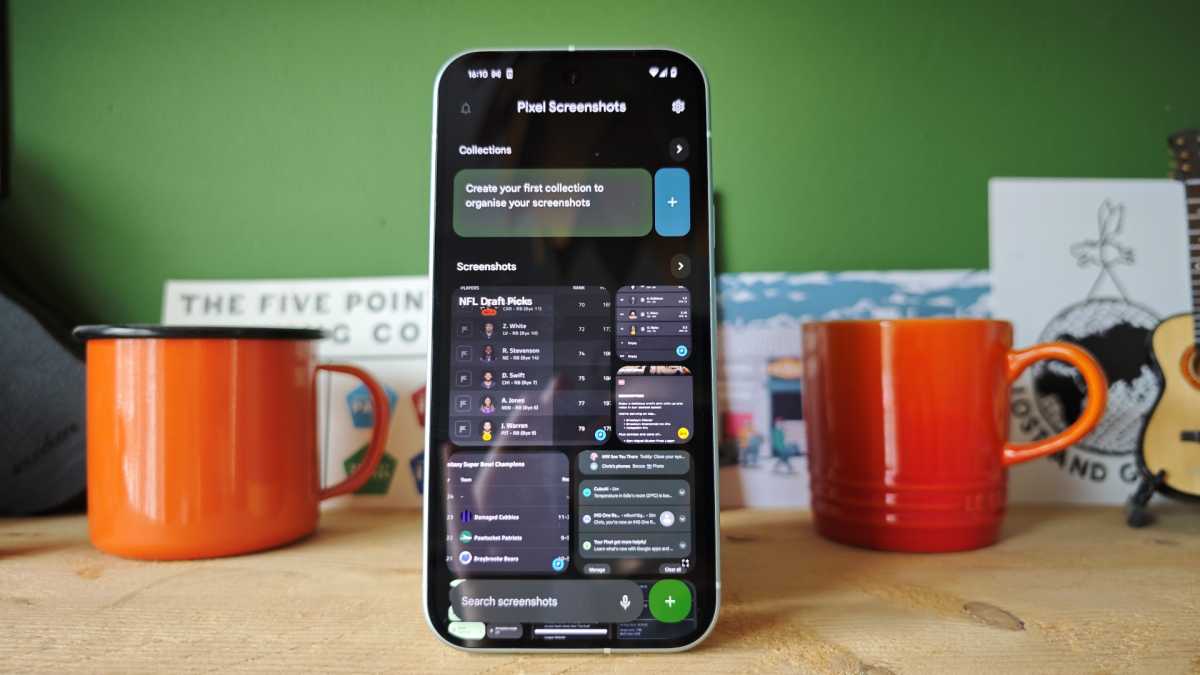
Chris Martin / Foundry
I also have new features like ‘Add Me’ in the camera app, which allows the photographer to be in the shot by taking two photos and merging them with the help of AI. I’ll mention how I get on with this and other camera features in the final review.
Price
The final thing to mention for now is that the price has gone up once again. Over the past couple of years, the Pixel series has crept up and has now hit £799/$799 for the cheapest model.
It wasn’t that long ago that the Pixel 6 and Pixel 7 were £599/$599, so Google is now clearly positioning itself as a more premium option, rather than a value option, when compared to the likes of Apple, Samsung and the best smartphones money can buy.
It makes it hard to recommend and brings up the ‘buy last year’s model’ argument even more convincingly, especially as Google’s seven-year software promise applies to the Pixel 8 range which, of course, has been discounted now it’s the previous gen.
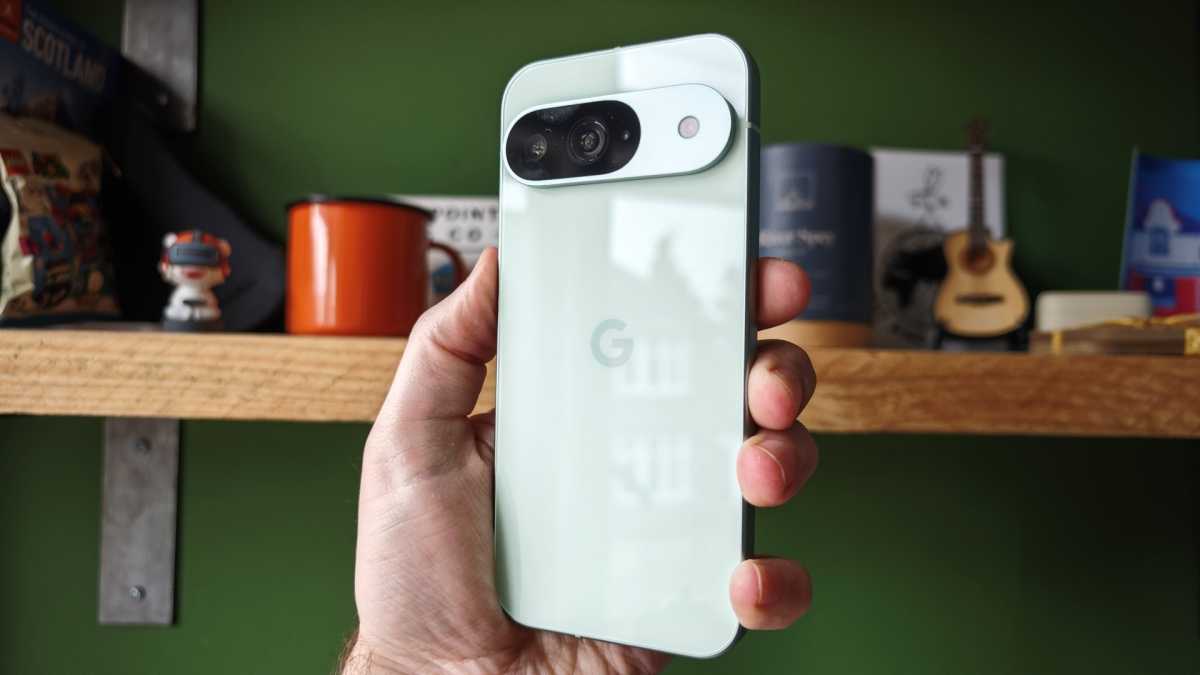
Chris Martin / Foundry
Early verdict
The TL:DR summary here is that I’m more torn (and confused) about the Pixel 9 than I usually would be about Google’s phones.
The design is very iPhone, losing personality, and while there are various welcome hardware upgrades and a bunch of new software features, I’m not totally sure they are enough to justify another price hike.
Check back soon for my full review.





